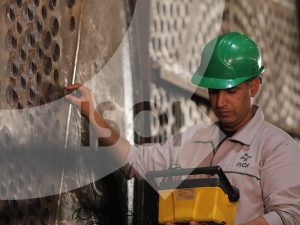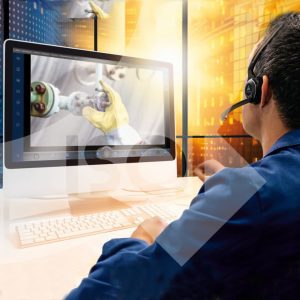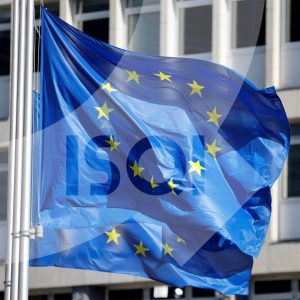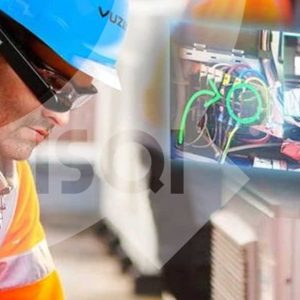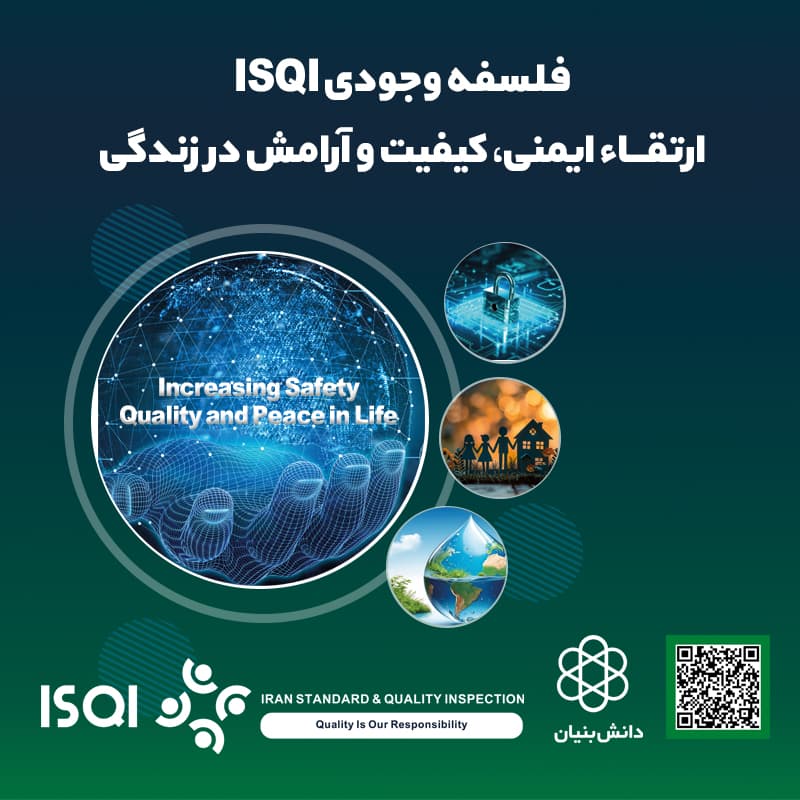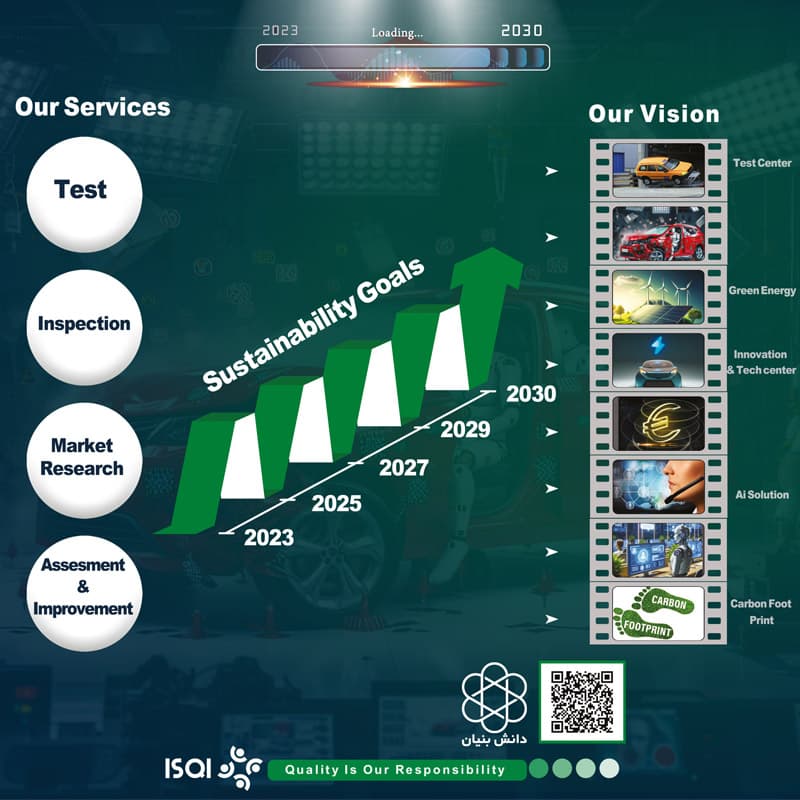Iran Quality and Standard Inspection Company was established in 1368 with the aim of creating quality management systems in manufacturing and service companies and ultimately improving the quality of industrial products as the executive arm of the quality policies of the Ministry of Industry, Mining and Trade with the investment of the Organization of Development and Modernization of Iranian Industries. The Iran Quality and Standard Inspection Company initially started its activities by inspecting steam and water boilers.
Therefore, the boiler and pressure vessel inspection unit is one of the oldest parts of the industrial equipment inspection unit and ISQI company, which is based on the qualification approval carried out by Iran’s national qualification approval center and relying on more than 32 years of inspection experience in the fields of design approval, inspection During the construction and maintenance of steam boilers, hot water, hot water and pressure tanks based on the relevant national standards (ISIRI 4231 and ISIRI 7911 and ISIRI 18132) and (ISIRI 13782) and international valid standards, it has been able to attract and use the power of expert and experienced experts Provide quality and valuable services to the industrial society of Iran.
An overview of the inspection process during the construction of steam and hot water boilers and pressure tanks
The process of inspecting steam boilers and hot water boilers during construction according to the laws of the National Standards Organization of Iran has mandatory standards No. 4231 and 7911. In order to ensure that the consumables, design, manufacturing and NDT tests are carried out in all respects in accordance with the mentioned national standards, adequate and accurate inspections must be carried out. Therefore, according to mandatory standards No. 4231 and 7911, every boiler during the manufacturing process must be inspected by official or certified inspectors from Iran’s national certification organization.
Work records of inspection projects during the construction of steam and hot water boilers
Inspection during construction and conducting non-destructive tests (NDT) and determining the energy consumption category on the products of more than 45 main manufacturers of steam boilers, hot water and hot water and pressure tanks in the country (on average 750 steam boilers, 1500 boilers hot water and hot water and 100 pressure tank devices) such as Arak Machinery, Garmagostar Industries, Pakman, Supraactive, Pak Fan Bohar, Heat Gostar, Bohargostar Khavor, Arvin Bohar, Armenko, Asoeh Industries, Rafee Steel Tank, Sepahan Steam Industry, Sisan, exchange makers and…
Inspection process during boiler and tank construction
Nowadays, because of the increasing development of oil, gas and petrochemical industries and power plants and the construction of thousands of pressure vessels in which they are used, inspection of pressure vessels is of particular importance. Some of these equipments are very complex and others have a relatively simple design. There is a wide range of pressure vessels, but their inspection is almost the same.
Many codes and standards have been created to ensure the safety and health of the product, and for experts and engineers to familiarize themselves with them, in this article, the most important inspection steps from the pre-manufacturing stage to the packaging and shipping stage are summarized.
Technical inspection is a process, the correct performance of which guarantees the quality of the product. Regarding the inspection of steam boilers and pressure vessels due to its wide application in the facilities and oil and gas industries and their importance, an overview of the various stages of inspection from the pre-construction stage to the insulation, cover and coating and sending for the familiarization of engineers and experts will be presented. becomes:
Pre-construction inspection of boilers and tanks
1) Checking the general condition of the factory in terms of having suitable equipment for construction (including overhead cranes, rolling rollers, manual and automatic welding equipment, etc.) and equipment needed for quality control of construction stages, materials and products
2) Checking the capability of the production plant in terms of having equipment and an acceptable quality control system (if possible, having quality certificates)
3) If there is a need and necessity to prepare and approve ITP, attend the Pre-inspection Meeting or the meeting before the start of the inspection and provide points of view and suggestions in relation to various issues raised in the contract and quality control plan; (signing the meeting minutes and confirming it)
4) Reviewing material certificates such as sheets, flanges, pipes, etc., as well as consumables such as electrodes, paint, etc., and inspecting materials (verifying relevant certificates)
5) Checking the existence of the approved map for the desired boiler or tank (in the absence of an approved map, it is not possible to conduct an inspection)
6) Conduct welder test and issue WQT certification
7) Verification of the NDT non-destructive testing service team in terms of relevant certificates and qualification approval from NACI National Center and having at least SNT-TC-IA – Level II certificate for NDT-men.
8) Checking the calibration certificates of welding devices, electrode heaters, machining equipment, etc. Checking the calibration certificates of devices and control equipment used in the QC unit of the manufacturing company (and verifying them)
9) Checking WPS, PQR, NDT instructions, hydrostatic (or pneumatic) tests, Hardness PMI tests, etc. (if necessary), tensioning instructions, paint and sandblasting instructions and confirming them
Inspection during construction and supervision of boiler and tank tests
1) dimensional inspection of markings before cutting sheets and sampling raw materials
2) Monitoring the transfer of Stamp identification information of raw materials to different parts of the sheet before cutting (parts under pressure)
3) Examining the laboratory report regarding the samples of materials sent and their approval or disapproval
4) monitoring and controlling the preparation of sheet edges (sinterings) according to WPS and drawings
5) Visual and dimensional inspection of cut sheets
6) Supervising the performance of non-destructive PT tests (penetration liquid test) on the edges of the sheets for thicknesses above 50 cm (if needed)
7) control over the primary rolling of sheets according to approved drawings
8) Supervising the assembly of sheets and welding its longitudinal seam according to WPS and the approved plan
9) Visual inspection of welding using calibrated equipment and providing VT test report
10) Supervision of secondary rolling of sheets
11) Inspection of rolled sheets in terms of ovality and roundness, thickness and dimensions according to the plan and standard
12) Conduct or supervise the non-destructive RT and UT test of longitudinal welding according to the percentages and conditions of the relevant standards.
13) Supervising the assembly of tube sheets and lenses and the welding of peripheral seams according to the plan and WPS
14) Visual inspection of peripheral welds
15) Conducting or supervising the non-destructive test of RT and UT of ambient welding according to the percentages and conditions of the relevant standard
16) Monitoring and controlling the marking of nozzles on the shell before cutting and drilling
17) Dimensional monitoring and control of Heads and Tube-sheets (lenses and tube plates…) after the forming operation in terms of required thickness and curvature according to the map
18) Supervising the non-destructive testing of MT on the outer surface of the knuckle of the tank lenses.
19) Supervising the assembly and welding of the first lens or tube sheet to the shell
20) Visual inspection of welds, providing VT test report
21) Supervising the PT and RT tests of lens welding to Shell
22) Supervising the construction of the furnace (plain or corrugated or…) and its NDT test
23) Supervising the assembly of the furnace to the chamber and…
24) Conduct or supervise NDT testing of peripheral welds connecting the chamber to the furnace
25) Supervise the flange-to-nozzle welding assembly
26) Visual inspection of the weld, providing a VT test report
27) Supervising the RT test for flange-to-nozzle welding (if possible)
28) Monitoring the assembly and welding of the nozzle to the shell or lens
29) Visual inspection of welds, providing VT test report
30) Supervising the UT or MT test of welding nozzle to shell or lens or tube sheets
31) Assembling and welding the Reinforcing Pad (reinforcing sheet) of the nozzle to the shell (or access valves)
32) Supervising Air Leak Test using soap and water for reinforcement plate for pressure vessels.
33) control over the assembly and welding of the lens or the second sheet tube to the shell of the boiler or tank
34) Visual inspection of welding
35) Test/ RT UT second lens or sheet-to-shell tube
36) Visual and dimensional control of Leg/Saddle/Skirt construction
37) Visual inspection of Leg/Saddle/Skirt welding to tank
38) Supervising PT or MT tests of skirt to lens/saddle or leg to tank welding
39) Supervising the assembly and welding of the external and internal parts of the tank (ladder clips, platform, etc.)
40) Supervising PT or MT tests for internal and external parts
41) PMI test or Ferrite Content Test (if needed)
42) Final dimensional and visual inspection of the tank
43) Monitoring stress relief (thermal operations after welding) and controlling PWHT chart if needed
44) Supervision of Hardness Test and Production Test if special materials are used
45) Monitoring the cleanliness and cleaning of the internal surfaces of the boiler or tank after heat treatment and testing
46) Watering and aeration monitoring and Hydro test pressure test monitoring
47) Final dimensional and visual inspection during the pressure test
48) Supervision of sandblasting and paint in pressure vessels that need paint or coating (not needed in boilers)
49) Supervising the construction and installation of the identification plate (Name Plate) according to standard requirements
50) Installation of control equipment such as valves and fountains, level control equipment and …
51) Insulating and covering the boiler (or the final cover of the tank)
52) Review and control of the manufacturer’s final documents (MDR)
53) Inspection of packaging and markings on the boiler or tank
54) Issuance of certification and plate of compliance with the standard for the relevant boiler or tank

